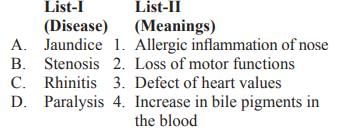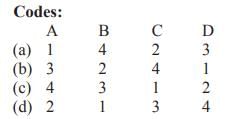Test: Biology - 3 - BPSC (Bihar) MCQ
20 Questions MCQ Test - Test: Biology - 3
The main reason why antibiotics could not solve all the problems of bacterial diseases is
(a) Insensitivity of the individual following prolonged exposure to antibiotics
(b) Inactivation of antibiotics by bacterial enzymes
(c) Decreased efficiency of the immune system
(d) The development of mutant strains resistant to antibiotics
(a) Insensitivity of the individual following prolonged exposure to antibiotics
(b) Inactivation of antibiotics by bacterial enzymes
(c) Decreased efficiency of the immune system
(d) The development of mutant strains resistant to antibiotics
Consider the following statements:
1. Annual rings are distinct in plants which grow in temperate region.
2. One growing ring of plant consists of only spring wood.
Q. Which of the statements given above is/are correct about annual ring?
1. Annual rings are distinct in plants which grow in temperate region.
2. One growing ring of plant consists of only spring wood.
Q. Which of the statements given above is/are correct about annual ring?
Consider the following statements:
1. Carolus Linnaeus is the father of binomial nomenclature of organisms.
2. The word taxonomy was coined by Augustin de Candolle.
Q. Which of the above statements is/are correct?
Match List-I with List-II and select the correct answer by using the codes given below:

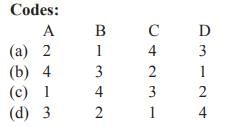
Which of the following is the correct sequence of the different phases of cell division?
1. Anaphase
2. Telophase
3. Prophase
4. Metaphase
Consider the following statements:
1. The cell was discovered by Robert Hooke.
2. Nucleus was described by Robert Brown.
3. Plant cells generally have lysosomes.
Q. Which of the above statements is/are correct?
Match List-I with List-II and select the correct answer by using the codes given below:
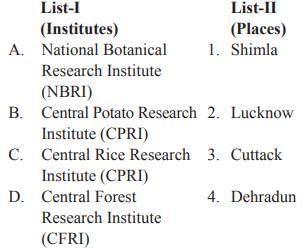
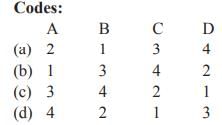
Match List-I with List-II and select the correct answer by using the codes given below:
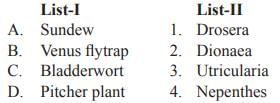
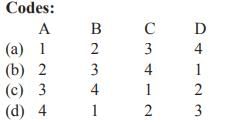
Match List-I with List-II and select the correct answer by using the codes given below:

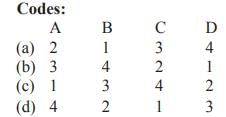
Match List-I with List-II and select the correct answer by using the codes given below:
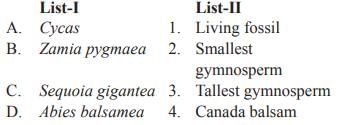
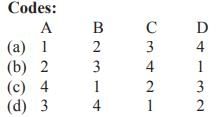
Consider the following statements:
1. Sphagnum is used as a packing material for transporting living plants.
2. Drug ephedrine is obtained from stem of Sphagnum.
Q. Which of the statements given above is/are correct?
Match List-I with List-II and select the correct answer by using the codes given below:


Consider the following statements:
1. Bryophytes are the amphibians of plant kingdom.
2. Bryophytes do not have vascular tissue.
3. Selaginella is an example of Bryophytes.
Q. Which of the statements given above is/are correct?
Consider the following statements:
1. Food prepared by plant is transported to different parts of plant through phloem.
2. Water and minerals in plant is transported through phloem.
3. The cell wall of phloem cells is rich in lignin.
Q. Which of the statements given above is/are correct?
Consider the following statements:
1. Lichens show symbiotic association between algae and bryophytes.
2. Lichens are sensitive to SO2 and indicators of pollution.
Q. Which of the statements given above is/are correct about lichens?
Consider the following statements:
1. Chlorella is present in sewage.
2. Chlorella produces food rich in vitamins, proteins, etc.
3. Chlorella is used in prolonged space flight for O2.
4. Chlorella yields an antibiotic, penicillin.
Which of the statements given above is/are correct?
Diabetes mellitus takes place only when
(a) ∝-cells of pancreas are in excess
(b) β-cells of pancreas are in excess
(c) ∝-cells of pancreas are in hypo
(d) β-cells of pancreas are in hypo
Consider the following statements and select the correct answer from the codes given below:
Assertion (A): In filariasis, the lower legs and scrotum are swelled to unproportionate level.
Reason (R): The filarial worms block the lymph vessels and lymph node.
Consider the following statements:
1. Progeria is the genetic disease associated with fast ageing.
2. Progeric patients never live beyond early years of 5 or 6.
Q. Which of the statements given above is/are correct?


